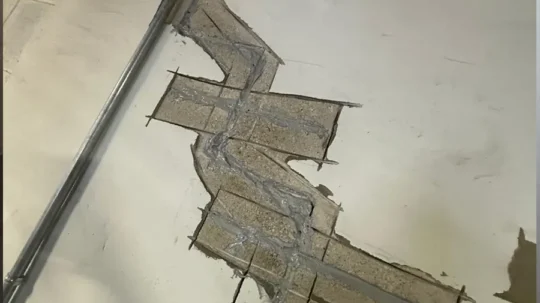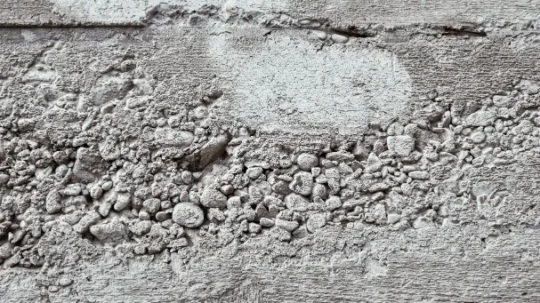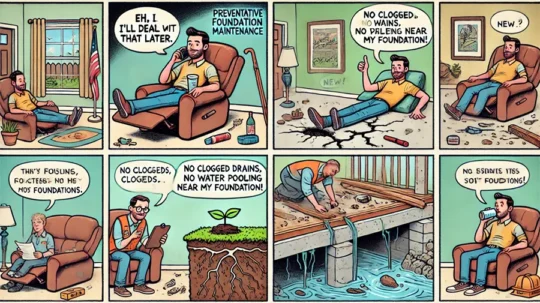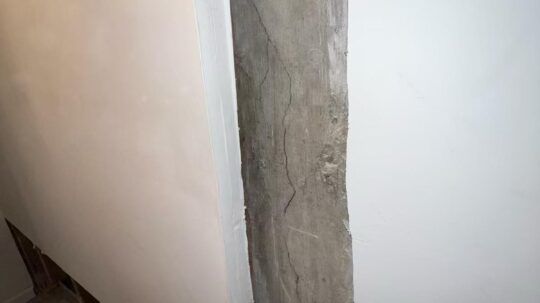
Protect Your Home with These Preventative Foundation Maintenance Tips
Your home’s foundation supports its structural integrity, yet maintenance is often overlooked until major issues arise. A simple preventative routine can prevent costly repairs, protect property value, and ensure long-term stability. Ignoring small signs—like hairline cracks, uneven floors, or moisture buildup—can lead to expensive repairs.
Foundation problems develop gradually, but regular inspections and proactive care help prevent serious damage. The guide covers essential foundation maintenance tips, from seasonal upkeep to drainage solutions and when to call a professional, ensuring your home stays protected for years.
Protect Your Home’s Stability – Start a Preventative Maintenance Routine Today!
How Seasonal Changes Affect Your Foundation
Your home’s foundation is exposed to the elements year-round, and shifting weather conditions can put stress on its structure. Understanding how different seasons affect foundation stability can help you take proactive steps to prevent damage.
Spring: Heavy Rain and Soil Saturation
Spring brings rain and rising groundwater levels, which can oversaturate the soil around your foundation. This extra moisture can cause the soil to expand, leading to movement and pressure against the foundation walls.
- Maintenance Tip: Ensure gutters and downspouts are clear, directing water at least 5-10 feet away from the foundation.
Summer: Soil Shrinkage and Foundation Settling
Hot summer months can dry out the soil, causing shrinkage and gaps under your foundation. When the soil contracts, it can lead to foundation settlement and small cracks in the structure.
- Maintenance Tip: Maintain consistent soil moisture around your foundation to prevent excessive contraction and expansion.
Fall: Shifting Temperatures and Soil Instability
As temperatures cool, soil conditions change again. If the foundation has already settled due to summer drought, fall rains can lead to unstable soil conditions and further shifting.
- Maintenance Tip: Inspect your foundation for new cracks and adjust grading around your home to promote proper drainage.
Winter: Freeze-Thaw Cycles and Expanding Concrete
Water trapped in small foundation cracks can freeze and expand, causing widening cracks and weakened structural integrity. This is known as frost heave, which can push the foundation upward.
- Maintenance Tip: Seal foundation cracks before winter to prevent water intrusion and frost-related damage.
Regular seasonal foundation maintenance ensures that minor issues don’t escalate into costly structural problems.
Stay Ahead of Seasonal Damage – Start Your Foundation Maintenance Routine Today!
Key Preventative Foundation Maintenance Tips
Following these preventative maintenance steps can help homeowners keep their foundations strong and stable for decades. A solid foundation is essential for home safety, and with consistent care, you can prevent foundation damage, avoid costly repairs, and ensure long-term home foundation protection.
Exterior Maintenance
The exterior of your home plays a significant role in foundation stability. Proper upkeep reduces risks caused by water intrusion, soil movement, and environmental stressors.
- Monitor and Seal Foundation Cracks – Regularly inspect your foundation for cracks and seal them promptly to prevent moisture penetration. Small cracks can quickly expand if left untreated, leading to significant structural issues.
- Keep Gutters and Downspouts Clean – Clogged gutters can cause water to overflow and pool around the foundation. Ensure downspouts direct water at least five feet away from the home to minimize erosion and hydrostatic pressure.
- Install Downspout Extensions – Ensure downspouts direct water at least 5-10 feet away from the foundation to prevent pooling.
- Check for Proper Grading Around the Home – The soil surrounding your home should slope away from the foundation to prevent water accumulation. Regrade areas where water tends to pool or erode soil.
- Trim Trees and Large Roots Near the Foundation – Tree roots can draw moisture from the soil, causing it to shrink and destabilize the foundation. Large roots can also exert pressure on the foundation, leading to cracks and movement.
- Consider a French Drain System – For homes prone to flooding, installing a French drain can redirect excess water away from the foundation.
Interior Maintenance
Inside your home, subtle warning signs often indicate foundation movement before major damage occurs. Regular interior inspections help detect and address problems early.
- Check for Uneven Floors and Wall Cracks – Sloping floors, gaps in baseboards, and growing cracks in drywall could signal shifting foundations. Addressing these early can prevent structural instability.
- Inspect Doors and Windows for Misalignment – Doors and windows that stick or do not close properly may indicate foundation movement. If adjustments are needed frequently, have a professional assess your foundation.
- Watch for Signs of Moisture Buildup – Musty odors, mold growth, or damp areas in basements and crawl spaces could point to foundation-related moisture issues. Proper ventilation, dehumidifiers, and waterproofing solutions can help.
Seasonal Checks
Each season brings unique foundation challenges. Adapting maintenance routines to seasonal changes helps prevent avoidable damage.
- Spring & Fall: Perform a full foundation inspection to check for new cracks, shifting, and water intrusion. (See our Foundation Inspection Checklist for Homeowners for a detailed guide.)
- Winter: Ensure proper drainage to prevent frost heave, which can cause foundation lifting and cracking. Insulate exposed pipes to prevent leaks near the foundation.
- Summer: Maintain stable soil moisture levels to prevent excessive drying, which can lead to soil shrinkage and foundation settling. Use soaker hoses or sprinklers as needed.
Follow These Steps to Keep Your Foundation Strong!
A little preventative maintenance goes a long way in protecting your home’s foundation. By staying proactive with inspections and repairs, homeowners can avoid costly damage and preserve the structural integrity of their homes for years to come.
The Role of Proper Drainage in Foundation Health
Water is one of the biggest threats to foundation stability, making proper drainage a crucial part of foundation maintenance. Without adequate drainage, excess moisture can weaken soil, cause foundation settling, and lead to costly repairs.
Why Proper Drainage is Essential
- Prevents Foundation Erosion and Settlement – When water pools around the foundation, it can wash away supporting soil, causing the foundation to shift or sink.
- Reduces Hydrostatic Pressure – Excess moisture creates pressure against foundation walls, leading to cracks, leaks, and even basement flooding.
- Protects Against Basement Flooding – Standing water around the foundation increases the risk of moisture intrusion, mold growth, and structural damage.
Common Foundation Maintenance Mistakes to Avoid
Even well-intentioned homeowners can make common foundation maintenance mistakes that end up causing more harm than good. Avoid these errors to keep your home’s foundation stable and secure.
Frequent Foundation Upkeep Errors
- Ignoring Small Cracks – Even hairline cracks can expand over time, allowing moisture to penetrate and weaken the foundation. Address them early with proper sealing.
- Overwatering Landscaping – Excessive watering causes soil to expand, exerting pressure on foundation walls. Maintain balanced moisture levels.
- Neglecting Gutters and Downspouts – Failing to clean gutters leads to water pooling around the foundation, increasing the risk of erosion and basement leaks.
- Delaying Professional Inspections – Small foundation issues can quickly escalate into costly structural damage. Regular inspections help detect and resolve problems early.
When to Call a Professional for Foundation Maintenance
While routine maintenance can be done by homeowners, some issues require professional assessment to ensure your foundation’s safety. Ignoring these warning signs can lead to serious structural problems.
Signs You Need a Foundation Repair Expert
- Cracks Wider than ¼ Inch – Large or widening cracks in foundation walls or floors indicate potential structural movement.
- Persistent Water Leaks – If moisture problems continue despite drainage improvements, professional waterproofing may be necessary.
- Uneven Floors or Misaligned Doors/Windows – These can signal foundation shifting and should be evaluated by an expert.
- Signs of Significant Settlement – If one side of the home appears lower than the other, a foundation professional should assess the situation immediately.
Consulting a foundation repair expert for annual inspections or major concerns can help homeowners prevent long-term damage.
Final Thoughts: The Long-Term Benefits of Preventative Foundation Maintenance Tips
Preventative foundation maintenance is one of the smartest investments homeowners can make to protect their home’s structural integrity. Regular inspections, proper drainage, and proactive care can prevent minor issues from escalating into costly foundation repairs.
By implementing simple maintenance steps—like cleaning gutters, checking for cracks, and managing moisture—homeowners can extend the life of their foundation and maintain property value for years to come.
Start Your Preventative Foundation Maintenance Routine Today!









